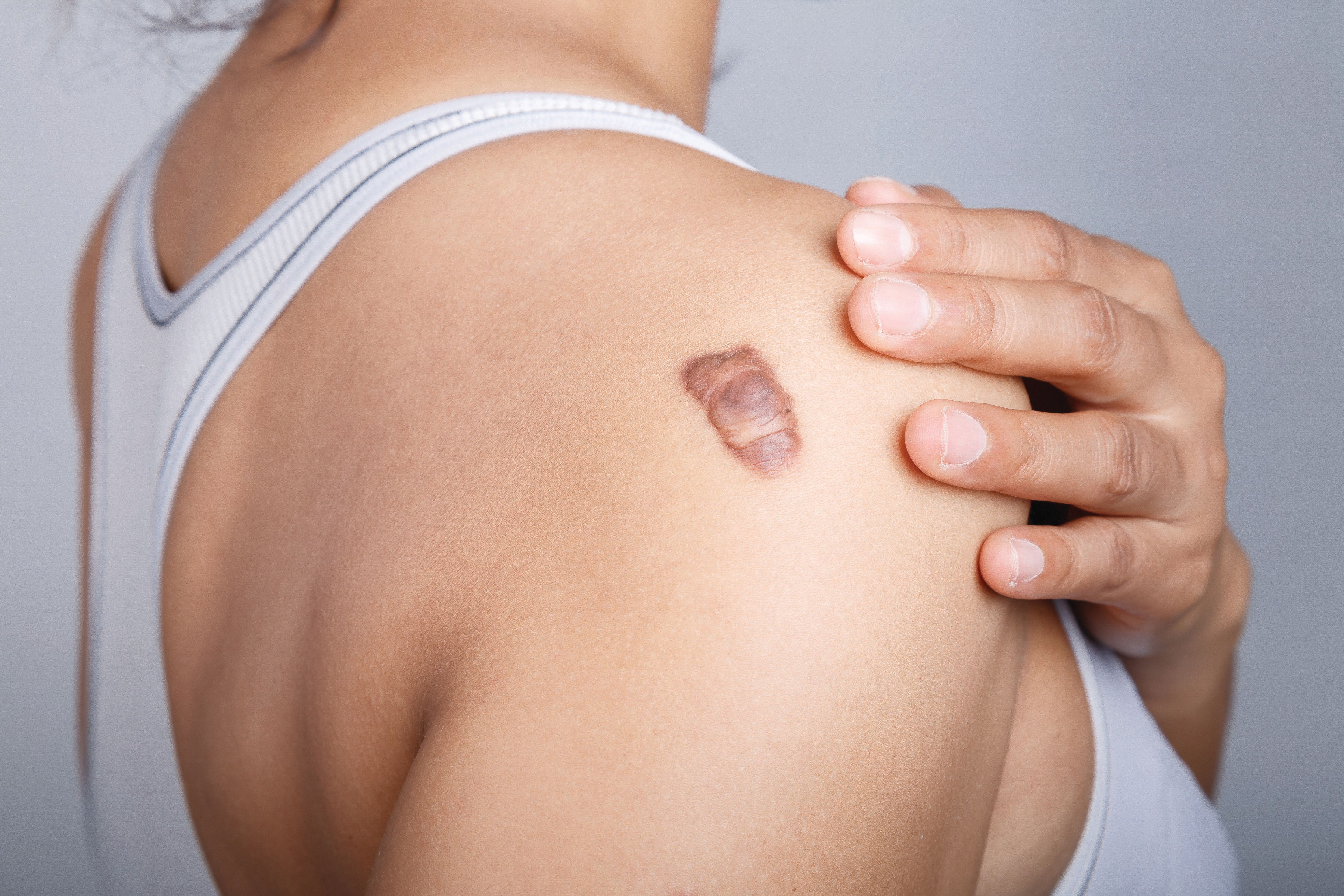- Acne
- Actinic Keratosis
- Aesthetics
- Alopecia
- Atopic Dermatitis
- Buy-and-Bill
- COVID-19
- Case-Based Roundtable
- Chronic Hand Eczema
- Chronic Spontaneous Urticaria
- Drug Watch
- Eczema
- General Dermatology
- Hidradenitis Suppurativa
- Melasma
- NP and PA
- Pediatric Dermatology
- Pigmentary Disorders
- Practice Management
- Precision Medicine and Biologics
- Prurigo Nodularis
- Psoriasis
- Psoriatic Arthritis
- Rare Disease
- Rosacea
- Skin Cancer
- Vitiligo
- Wound Care
Article
Genetics may play role in keloid formation
Author(s):
The formation of keloids may be due to a genetically based switch normalization failure in the remodeling stage of wound healing, says Greg Goodman, M.D. Find out more in this article.
Keloids are benign growths of dense fibrous tissue that develop from an abnormal response to a cutaneous injury. (weerajata - stock.adobe.com)

Dr. Goodman

The formation of keloids may be due to a genetically based switch normalization failure in the remodeling stage of wound healing, says Greg Goodman, M.D., associate professor of dermatology, Monash University, Clayton, Victoria, Australia, who recently spoke on the topic at the World Congress of Dermatology in Milan.
According to Dr. Goodman, the wound healing process is a continuum that progresses from scarless fetal wound healing to adult wound healing to keloidal wound healing. Adult wound healing is scarred but still considered normal, whereas keloidal wound healing is characterized as uncontrolled persisting proliferation of scar tissue.
RELATED: The problem with keloids
The three overlapping phases of wound healing are an inflammatory phase, a proliferative phase, and a remodeling phase; and it is the abnormal perpetuation of the proliferative phase due to the switch normalization failure into the remodeling phase that results in keloid formation in predisposed individuals.
“Why this physiologic turn-off switch does not occur in the keloid patient population remains an unknown,” he notes. “However, there is some evidence that the formation of keloids is genetically based, which could be the focus and direction for potential future therapeutic interventions that could help prevent keloid formation.”
Keloids are benign growths of dense fibrous tissue that develop from an abnormal response to a cutaneous injury. Keloids are a challenge to treat and manage because they’re often symptomatic and can have a significant psychosocial impact in affected patients.
There are a number of key parameters that can contribute to keloid formation in a patient, including the age of the individual, the size and tension of the area, the depth of the lesion and the family history of the patient.
“In normal wound healing, there is an expected turn-off of the collagen production, chronic inflammation, and the generation of growth factors and cytokines. However, this turn-off or switch normalization in the final stage of wound healing does not happen in keloid prone patients,” Dr. Goodman says.
The central mechanism behind the inability to turn off the switch appears to be a failure of apoptotic control, which is an inherited issue, Dr. Goodman says. The origin of keloid formation, therefore, seems to be in the genetics of various factors that stop the switch from turning off the normal physiologic process of wound healing.
RELATED: Addressing skin color in white scars
Also, keloids are 5% to 15% more common in dark-skinned populations, hinting toward the role of melanocytes in its pathogenesis.
Unfortunately, there are no current therapeutic interventions that can interfere with the genetics to help prevent keloid formation; however, this avenue may be the focus of future research efforts to help in the treatment, management and prevention of keloids.
Another of the key factors in the development of keloids is tension between the cells and their extracellular matrix, but, according to Dr. Goodman, that tension also works very well in the treatment and prevention of keloids. A certain stiffness between the cells (i.e., fibers, ground substance) and the extracellular matrix (i.e., fibroblasts, myofibroblasts) and the push back on that appears to play a very central yet still somewhat ambiguous role in the wound healing process.
“Tension on a wound can work both ways. If you have a tense wound, it is going to cause a keloid and if you apply pressure on a keloid the lesion may decrease in size,” he explains.
“Clinicians should be mindful of the rules of keloid production when selecting patients for a procedure, and, whenever possible, deep dermal wounding needs to be avoided, or treated aggressively early,” Dr. Goodman advises. Â
Disclosures:
Dr. Goodman reports no relevant disclosures.
Newsletter
Like what you’re reading? Subscribe to Dermatology Times for weekly updates on therapies, innovations, and real-world practice tips.











